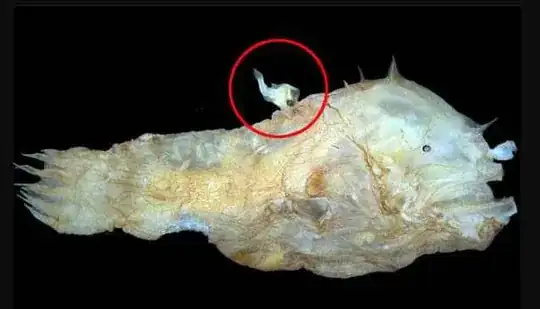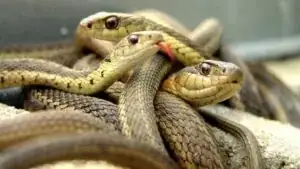In the monkfish, the females are the larger sex, while the males are very small: in comparison males measure only one tenth of the female, for example a female can measure up to 20 centimeters long but male only 2.
While the females grow, males are born just to survive till sexual maturity and then start searching a female to mate. When they do, they cling to the female through a bite and practically from that moment on they become part of the female's body, as they begin to lose their organs until their circulatory and nervous systems merge completely, at which time they are practically an appendix for the female, releasing the required gametes when the female needs it. Also, a female can have multiple males.
This is a type of polyandry thing that multiple species do, but I can't think of another mating method like the monkfish. So I want to know what impediments are there for the development of this type of mating and breeding in terrestrial species (or just aquatic bigger animals; probably is related with the capacity to carry more mass, but I'm not sure about this)?
But removing that fact are some species that I thought could develop it, from arthropods, amphibians to reptiles. My best current example: I knew that some snake species have notable differences in the size of males and females, some species (I don't remember the exact name) in which males search out females and then wrap themselves around the female to achieve intercourse and can last for several days that way. The "why" leads to how, so, why would this adaptation be useful for other animals?
But the method of reproduction being like a monkfish could be more problematic than benefit, because could reduce the movements (it's a cool idea but fictional and even ridiculous thought that the new "appendix males" can be a functional limb). So, I don't have more ideas for utilities to this type of mating at terrestrial animals, maybe if they don't lose all their senses and in this way can be used as new sensory organs.
Now, this characteristic seems harder to apply to mammals and birds -- in which males are usually bigger than females -- so if you want to apply this to these animals it's fine, but another doubt is how could the opposite exist: polyginy, carrying multiple females. I don't know if something like that exist, but I vaguely remember reading about something like that (and still quite different), a creature in which the larger male wraps up the smaller female for protection, basically becoming a biologic armor with a perpetual sexual exchange. I'm not sure if it's real; if I'm wrong let me know. Do these mechanisms already exist in real animals?
(Probably the last two ideas could be for other questions, but I want to know if mating mechanisms like those already exist, so do not explain too much in these cases just let me know if they already exist and if they have a formal name).
From this I will ask myself a new question (since in order not to extend so much it should be in another post) about, from ecosystems to societies based on these kinds of mating.

